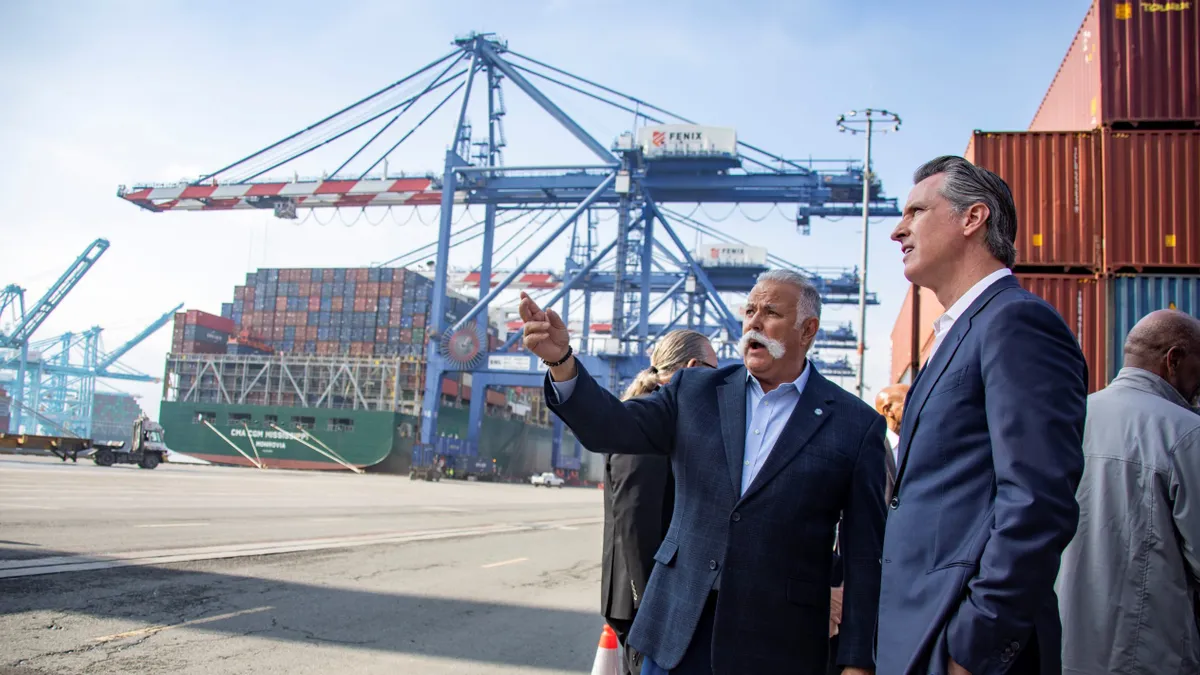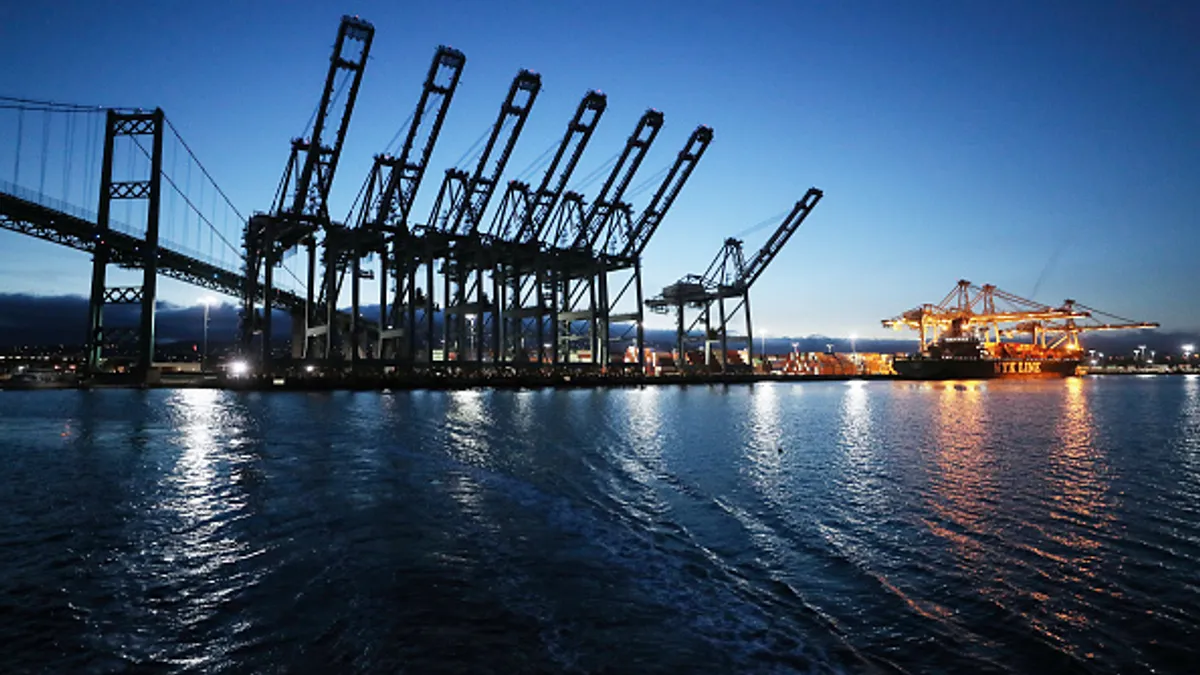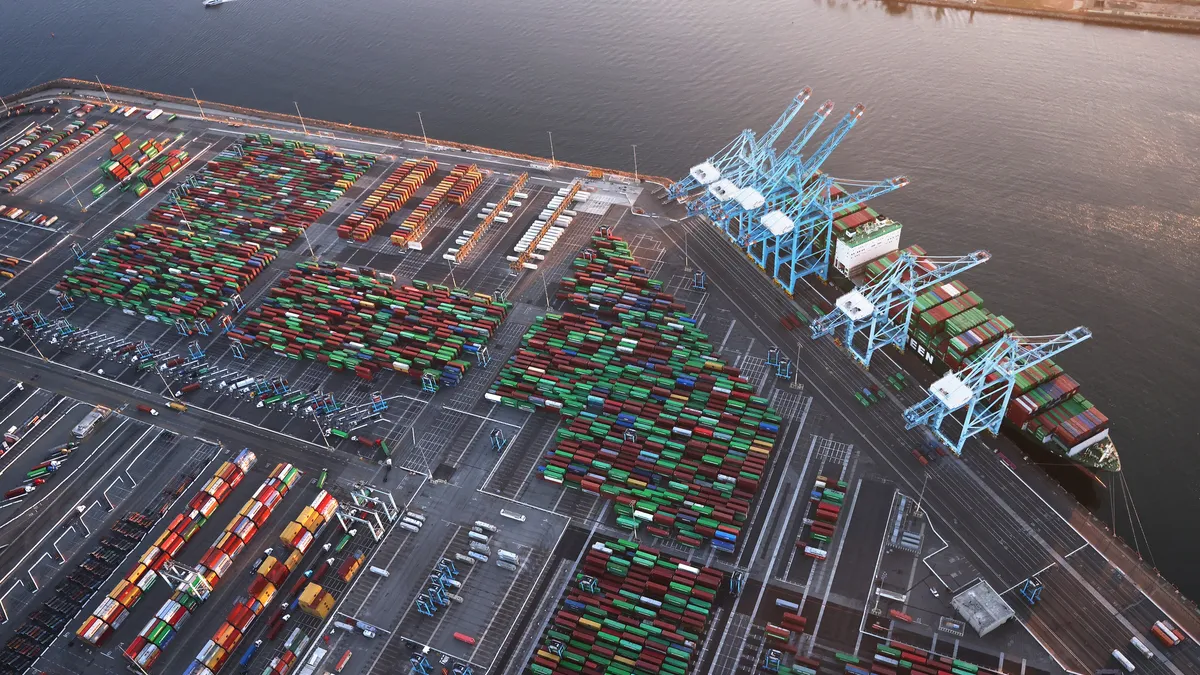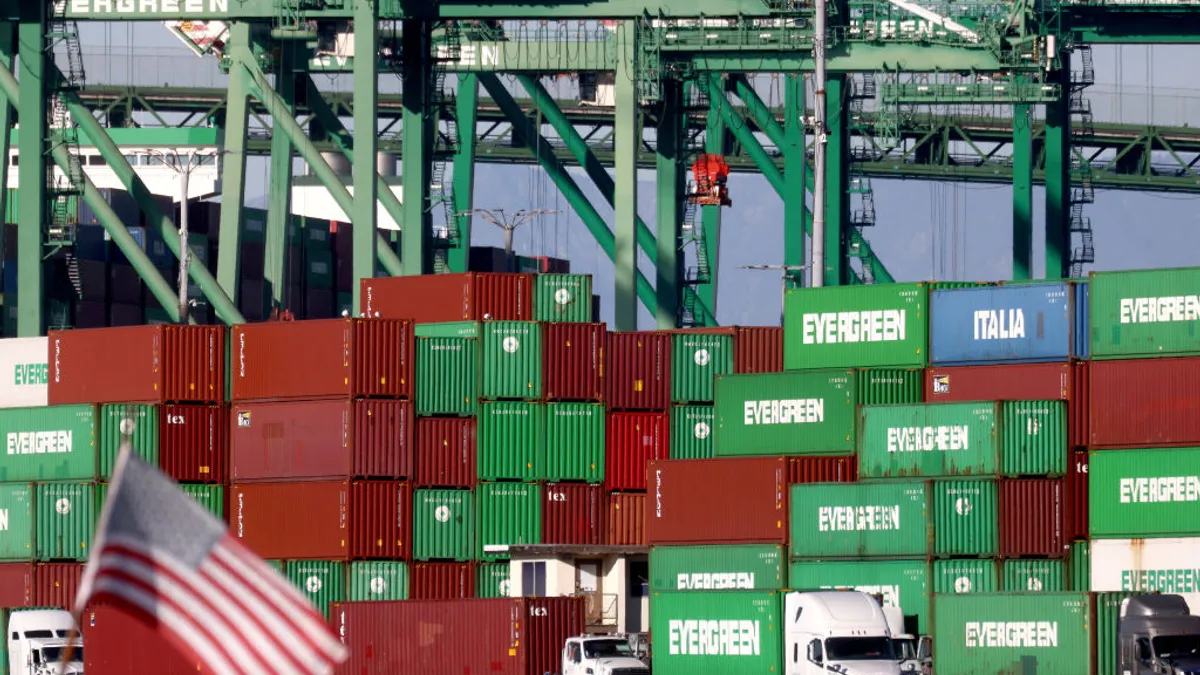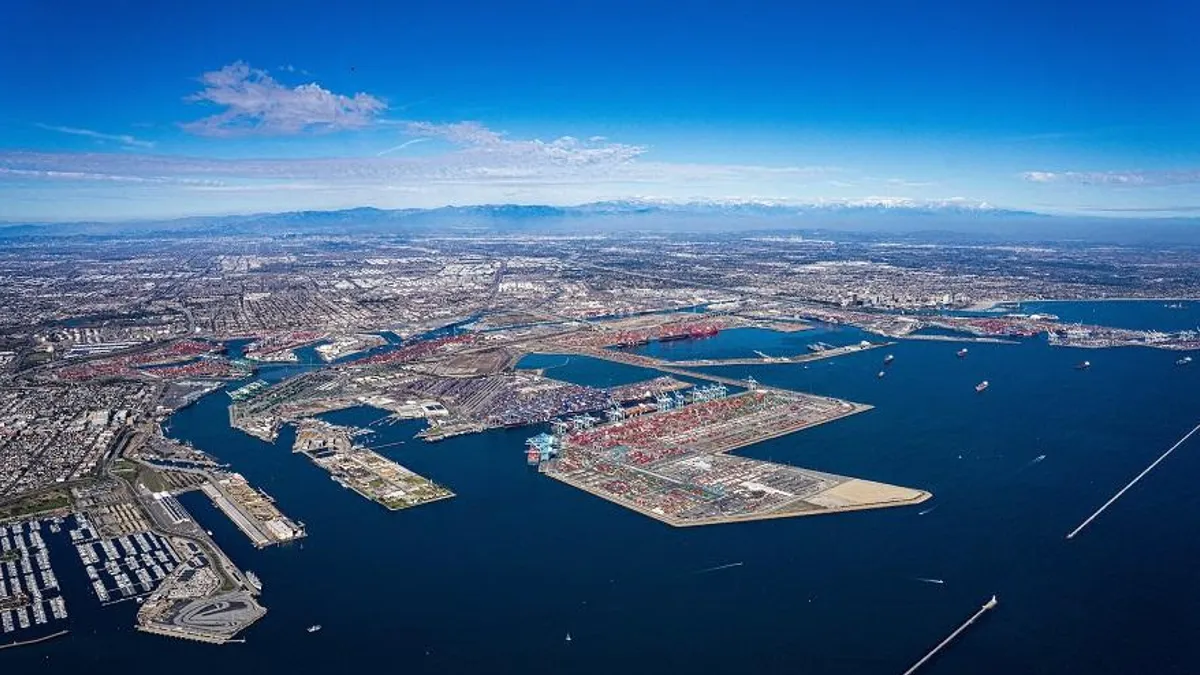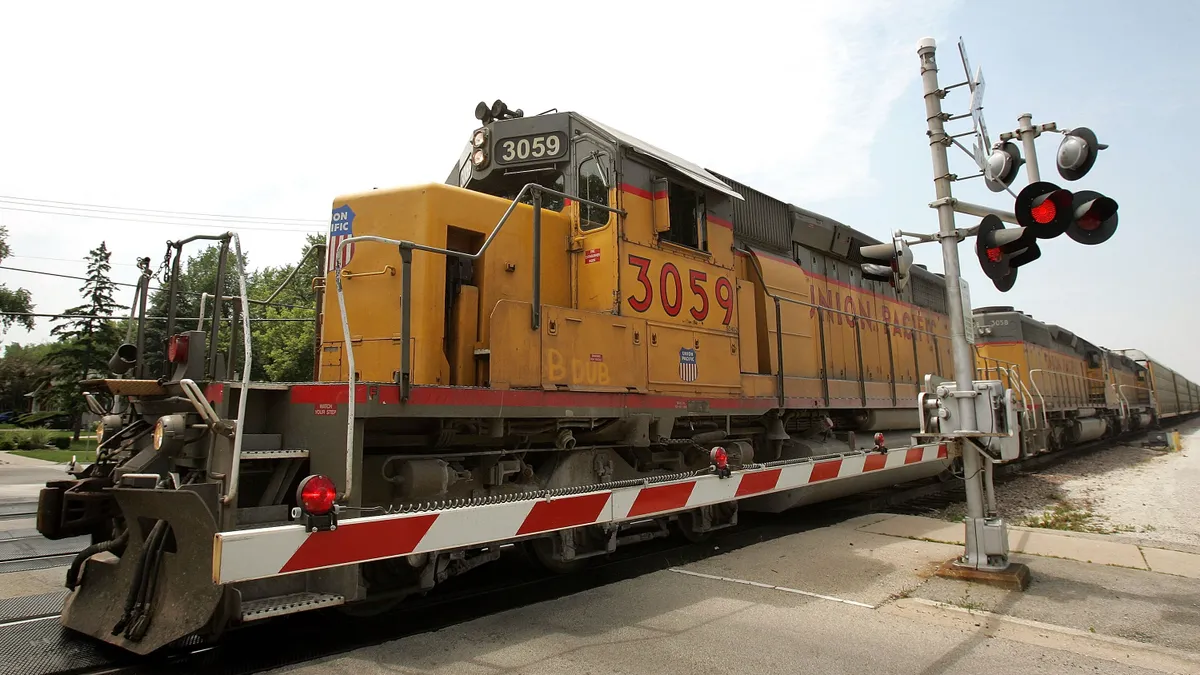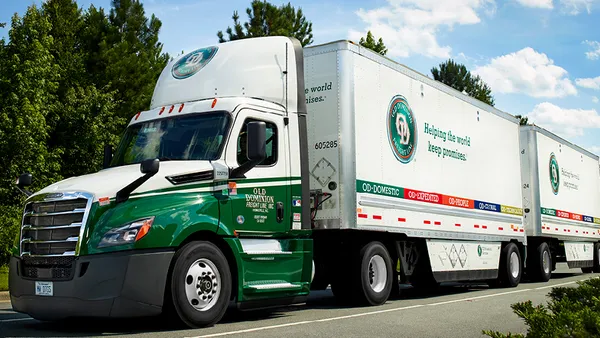Dive Brief:
- Caltrans is set to begin issuing permits that allow trucks to carry heavier payloads, as part of an ongoing effort to offload containers from congested Southern California ports with greater velocity.
- Carriers can apply for permits that increase the maximum weight a truck carries from 80,000 pounds to 88,000 pounds on state highways and interstates between the Port of Los Angeles, Port of Long Beach and distribution centers in California, according to a release from California Gov. Gavin Newsom's office. The permits are valid through June 30, 2022. "Cities and counties can issue their own permits for travel on local roads," the release said.
- Wednesday's announcement follows a directive from Newsom in October to identify "priority freight routes" to be considered for weight exemptions. Caltrans said it held workshops on Nov. 10 and 12 with freight industry stakeholders on warehouse and transloading centers, maximum loads, port bottleneck solutions, and helping trucking firms with permit applications.
Dive Insight:
Port and government officials are on a months-long mission to clear containers from the congested San Pedro Bay ports, and temporarily lifting truck weight limits is the latest step.
Easing weight restrictions aims to allow more goods to move on fewer trucks, which would reduce the number of appointment slots, drivers and trucks needed.
In California, weights are among the most restrictive in the U.S. Nearby states such as Idaho, Oregon and Washington permit gross vehicle weights up to 105,500 pounds, while Arizona, Nevada and Utah allow a maximum gross weight of 129,000 pounds.
Newsom, speaking at the Port of Long Beach Wednesday, specifically called out industrial and manufacturing cargo as benefiting from the temporary weight restrictions, while adding that retail freight may not see much of a benefit. Furniture, apparel and electronics are among the most common containerized imports at the Port of Los Angeles, but automotive parts were also in the top five for containerized imports in 2020.
The Agriculture Transportation Coalition has long advocated for higher weight limits in California, noting the higher weights in other states and Canada.
"There's essentially a wall of inefficiency as you go through California," Peter Friedmann, executive director of ATC, said during a November webinar with the Distilled Spirits Council of the United States. "We have to send three trucks to carry the same load that any other country only needs two trucks to carry ... which means we need more trucks; we need more drivers."
And those are hard to come by in the current market. Chip shortages limit the order books of truck OEMs, and the ATA estimated a driver shortage of 80,000.
It's another argument in favor of increasing the weight of haul one driver can take, although there are safety concerns related to blinds spots and braking distances.
"Study after study has shown that adding more weight to a truck makes it more dangerous," the Truck Safety Coalition tweeted.
Rolina Camello, terminal relations manager at Next Trucking, also expressed concerns about heavier loads. Camello has heard dispatchers report several accidents on terminals because workers are moving quickly to move containers and unclog congestion.
"Those guidelines are there for a reason," she said, in reference to the weight limits.
Ultimately, the additional 8,000 pounds per truck may be a step toward easing congestion, but it won't untangle all the logjams in the supply chain and at the California ports.
"We talk about 24/7 operations — that's not just one component," Newsom said at the ports. To make it work, 24/7 operations are "required of the entire supply chain system."
This story was first published in our sister publication, Transport Dive. Sign up here.



